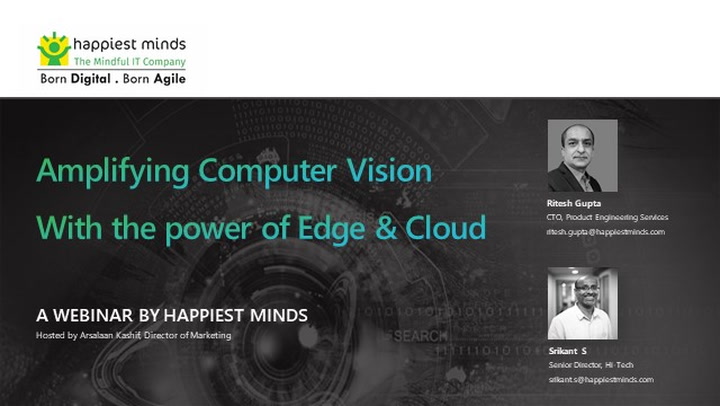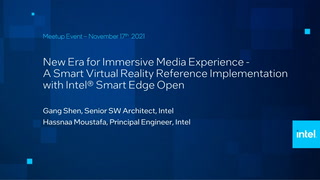Capgemini 5G-Based Smart RSU Helps Deliver On the Promise of 5G
Webinars
Engagement / Ecosystem Webinars / Amplifying Computer Vision with the Power of Edge & Cloud
Amplifying Computer Vision with the Power of Edge & Cloud
Ritesh Gupta, CTO, Product Engineering Services and Srikant S, Senior Director, Hi-Tech, Happiest Minds
Dec 09 2021 | 56 mins
- Details
* Click on the video to see attachments pertaining to this webinar |
The last few years have seen an increase in the use of Computer Vision with the emergence of robots and drones. It is now possible for machines to collaborate together and automate multiple tasks by making real time decisions at the edge or the cloud. Some of these use cases can be –
• Inspection of telecom towers and large data centers
• Live streaming with real time video processing
• Surveillance and intrusion detection
As these technologies gain a wider footprint, one of the main challenges is the high compute power and low latency required for creating optimal experiences. The advent of powerful edge and 5G will only aid in the faster processing of images and real time data transfer thus enabling even faster decision making by these machines. In this webinar, we will outline a framework for distributed processing that leverages the best of edge and cloud to provide faster output generation from computer vision models to aid faster decision making and smoother experiences. The edge processing can be carried out on OpenVino™ with an Intel® Movidius™ stick to make faster interferences and take real time decisions and the “Visual Cloud” framework can be used for cloud processing and providing real time localized views to end users.
Presenters:
- Ritesh Gupta, CTO, Product Engineering Services, Happiest Minds
- Srikant S, Senior Director, Hi-Tech, Happiest Minds
-
Intel® Network Builders University
-
Intel® Network Builders Newsletter
-
Intel® Network Builders Ecosystem Webinars
-
Traffic Engineering for Enhanced Quality of Service in Cloud-Native 5G Networks | Solution Brief
-
PDF of this webinar presentation PDF document
4 MB
-
Transcript of this webinar presentation PDF document
268 KB












